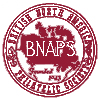Proofs — The Printers’ Finest Work
John Jamieson
(Published on the Saskatoon Stamp Centre website in August 2015)

Some of Canada’s most beautiful stamps are the die proofs and plate proofs prepared by the printers during the process of designing and preparing the printing plates. All are prepared with great care and show the very finest examples of the printer’s work. After all, it is these proofs that are shown to the Post Office officials to obtain their approval of the designs, colours and quality of the impressions before printing can begin.
Firstly, individual dies are engraved and proofs taken from these. Die proofs show a single impression of the stamp, usually printed on india paper mounted on a card backing for strength. It was normal practice to take 6 to 12 impressions when preparing a die proof for approval. If the engraver took a proof to check his progress he would likely take only a single impression. Thus ALL die proofs are exceptionally rare with many being unique. A “COMMON” die proof is one where 10 to 12 are known. Because of their extreme rarity, die proofs are quite expensive but many beautiful examples can be purchased for as little as a few hundred dollars.
Plate proofs are taken from the finished plates before the stamps go to press. They are almost always imperforate and printed on india paper to obtain the finest possible impression. Black proofs are taken to check for plate defects as black shows even the tiniest faults clearly. Colour proofs are prepared to show what the stamp would look like in various colours as well as to retain in the files for future reference. Occassionally proofs were pulled between press runs to check for plate wear. Plate proofs are printed in full sheets of between 50 and 400 stamps but there were seldom more than a couple of sheets prepared of any one proof and there are usually only 100 to as many as 800 copies of a proof known in private hands. Prices for plate proofs run from as little as $25 to over $1,000 depending on rarity.

As a result of the sale of the American Bank Note Company archives in September, 1990, many items previously unknown in private hands, came onto the market. Quantities ranged from unique individual items to several sheets of a few items. I, (J. Jamieson), intend to write a series of articles to run in future catalogues to clarify some of the concerns and misconceptions about what was actually sold (about 20-25% of the material was withdrawn at the last moment and transferred to the Canadian Postal Archives, much to the dismay of many collectors and dealers present at the sale).
Most of the very finest collections over the years have included extensive selections of proof material. If you are looking for something to enhance your collection, proof material has it all — beauty, rarity, and philatelic significance. This is not an inexpensive area to collect if completion is the goal, but even the collector on a tight budget can add something special and unusal to their collection in this area.
For more information on die proofs, proofs and essays, visit the website Proofs and Essays of Canada and its Provinces.
Copyright © 2015 John Jamieson
Web design copyright © 2013-2026 The British North America Philatelic Society.
The documents on this website are for informational and non-commercial or personal use only.
Documents on this website shall not be used on other websites or for commercial purposes without permission.
This page was last modified on 2021-12-20
